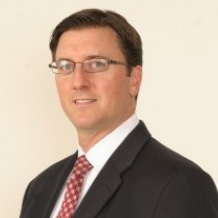Take an Active Role in Improving Legal Education
As a law professor, catching up with classes, scholarship, and other work after a conference is always challenging. Last month, I returned to San Francisco from the first gathering of the previously-only-virtual community connected through the Educating Tomorrow’s Lawyers Initiative (ETL) and website. ETL, through a conference entitled “The Development of Professional Identity in Legal Education,” brought together teams from its consortium schools, its ETL fellows, and many other legal education reform advocates. Upon my return, I was confronted with yet another demand on my time (and on my brain). Ideas. Many, many ideas.
Some day in the not-too-distant future, prospective law students will seek out law schools and individual professors who have led, and will continue to lead, these important reform efforts – like those affiliated with ETL. Employers, too, will recognize, through their hiring outcomes, how our students better represent practice-ready assets to the legal profession. Today, some judges, practicing lawyers, and prospective students do their research and appreciate the innovations implemented by our law schools and professors and the effect it has on our students. Most, however, still don’t.
That is our charge as part of ETL. We must facilitate the path to that day when emphasizing experiential learning, integrating practical skills, and forming our students’ professional identity becomes that so-called “traditional legal education,” as opposed to simply “reforms” or “innovations.” Integrating the recommendations from the Carnegie report into our courses transforms a class into an educational experience and a weekly opportunity for professional growth. Structuring law school curricula and teaching law in this way provides a qualitatively better learning environment than the traditional model. Current law students, and even prospective law students, seem to want this reform. They see it as the future, an asset to their portfolio. And it makes sense: why would they want the identical curriculum and classes as the law students of last century?
However, as we design better programs, courses, and materials, offer our students more opportunities to learn and practice professional skills, and provide greater feedback and critique, we must also get the word out about what we are doing. The ETL virtual community, an impressive group of innovators, should unabashedly embrace the role of ambassador. Legal education reform intersects with many of the other conversations we are already having within our law schools and among our faculties. Many of our colleagues, especially today, have an interest in changing legal education. Together we can, so spread the word.
As a tenure-track professor and ETL fellow, my role will be to focus on professors who are new to the academy. We can do a far better job presenting new faculty with the reform efforts and innovations in legal education, like those described on ETL’s website, than we can trying to break all the old molds. Even if their focus remains on scholarship, our newer faculty, as career over-achievers, want to be great classroom instructors too. We must help them understand that selecting a book and re-reading the seminal cases simply is not the most important step toward effective teaching and student engagement. We must educate new faculty about the full range of options available when constructing their own courses from the ground up – especially the first time.
I believe that new faculty, in addition to reviewing textbooks, should consult the course portfolios and other resources available on ETL. If your institution has hired a contracts professor new to the academy, then do that wide-eyed newbie a favor and forward on Professor Gillian Hadfield’s course portfolios on ETL. They can handle it. They want ideas too. And these ideas will make them stronger professors who can better prepare their students for the future.
Let’s spread the word to all our colleagues about the inevitable changes to legal education that we are leading. If the innovator now turns ambassador, then what will be your role?


